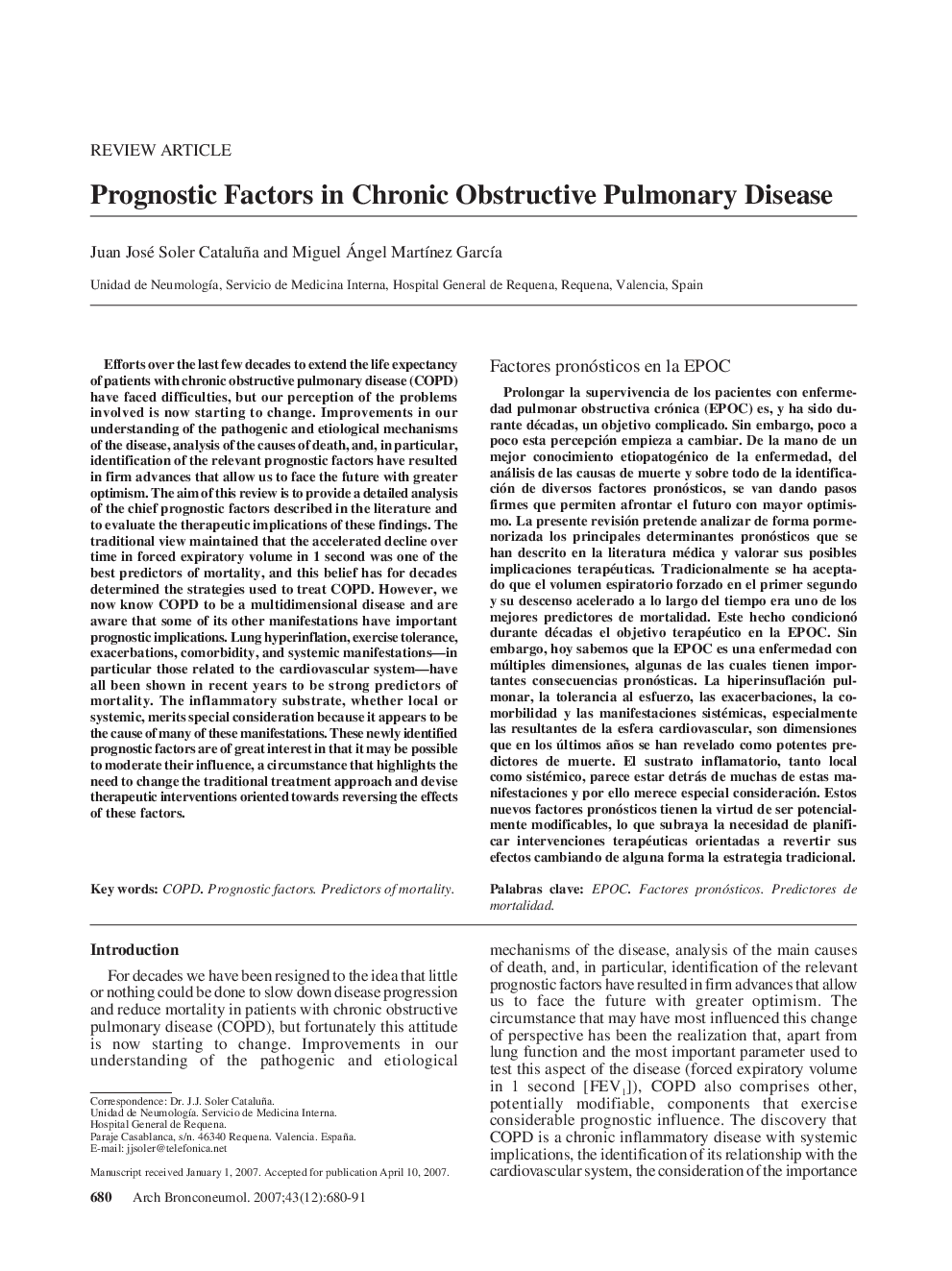| کد مقاله | کد نشریه | سال انتشار | مقاله انگلیسی | نسخه تمام متن |
|---|---|---|---|---|
| 4206870 | 1280025 | 2007 | 12 صفحه PDF | دانلود رایگان |

Efforts over the last few decades to extend the life expectancy of patients with chronic obstructive pulmonary disease (COPD) have faced difficulties, but our perception of the problems involved is now starting to change. Improvements in our understanding of the pathogenic and etiological mechanisms of the disease, analysis of the causes of death, and, in particular, identification of the relevant prognostic factors have resulted in firm advances that allow us to face the future with greater optimism. The aim of this review is to provide a detailed analysis of the chief prognostic factors described in the literature and to evaluate the therapeutic implications of these findings. The traditional view maintained that the accelerated decline over time in forced expiratory volume in 1 second was one of the best predictors of mortality, and this belief has for decades determined the strategies used to treat COPD. However, we now know COPD to be a multidimensional disease and are aware that some of its other manifestations have important prognostic implications. Lung hyperinflation, exercise tolerance, exacerbations, comorbidity, and systemic manifestations–in particular those related to the cardiovascular system–have all been shown in recent years to be strong predictors of mortality. The inflammatory substrate, whether local or systemic, merits special consideration because it appears to be the cause of many of these manifestations. These newly identified prognostic factors are of great interest in that it may be possible to moderate their influence, a circumstance that highlights the need to change the traditional treatment approach and devise therapeutic interventions oriented towards reversing the effects of these factors.
Prolongar la supervivencia de los pacientes con enfermedad pulmonar obstructiva crónica (EPOC) es, y ha sido durante décadas, un objetivo complicado. Sin embargo, poco a poco esta percepción empieza a cambiar. De la mano de un mejor conocimiento etiopatogénico de la enfermedad, del análisis de las causas de muerte y sobre todo de la identificación de diversos factores pronósticos, se van dando pasos firmes que permiten afrontar el futuro con mayor optimismo. La presente revisión pretende analizar de forma pormenorizada los principales determinantes pronósticos que se han descrito en la literatura médica y valorar sus posibles implicaciones terapéuticas. Tradicionalmente se ha aceptado que el volumen espiratorio forzado en el primer segundo y su descenso acelerado a lo largo del tiempo era uno de los mejores predictores de mortalidad. Este hecho condicionó durante décadas el objetivo terapéutico en la EPOC. Sin embargo, hoy sabemos que la EPOC es una enfermedad con múltiples dimensiones, algunas de las cuales tienen importantes consecuencias pronósticas. La hiperinsuflación pulmonar, la tolerancia al esfuerzo, las exacerbaciones, la comorbilidad y las manifestaciones sistémicas, especialmente las resultantes de la esfera cardiovascular, son dimensiones que en los últimos años se han revelado como potentes predictores de muerte. El sustrato inflamatorio, tanto local como sistémico, parece estar detrás de muchas de estas manifestaciones y por ello merece especial consideración. Estos nuevos factores pronósticos tienen la virtud de ser potencialmente modificables, lo que subraya la necesidad de planificar intervenciones terapéuticas orientadas a revertir sus efectos cambiando de alguna forma la estrategia tradicional.
Journal: Archivos de Bronconeumología ((English Edition)) - Volume 43, Issue 12, 2007, Pages 680-691